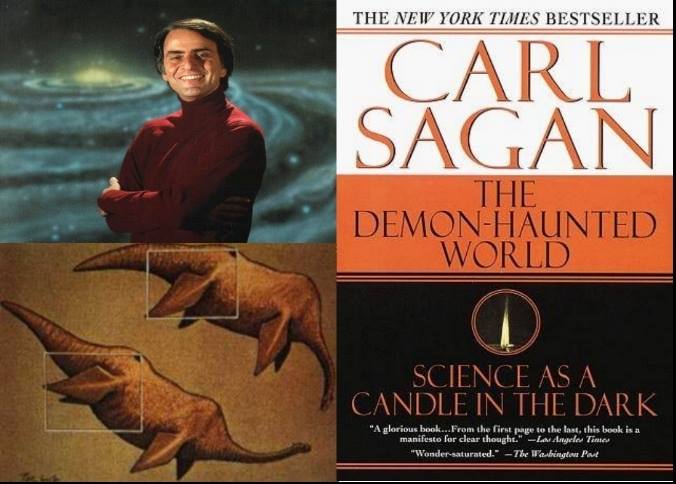
March 10, 2014
It is not commonly known that the eminent astronomer Carl Sagan (1934-1996) became involved with the question of unknown animals in Loch Ness. A review of a presentation of the Academy of Applied Science Loch Ness evidence at Cornell University in 1976 (Adler, K., 1976, “Loch Ness monster evidence presented at Cornell University”, Herpetological. Rev, 72: 41-46) contains the following passages: “Dr. Carl E. Sagan is an astronomer and is noted for his work on the Mariner probes of Venus and Mars, projects involving some of the same photographic enhancement techniques used on the Loch Ness project. Sagan stated that the possibility of a hoax in this instance is quite remote because of the reputations of the persons involved and because of the elaborateness necessary to perpetrate a hoax when the gathering techniques are so sophisticated and involve so many simultaneous modalities. He also contacted his associates at the Jet Propulsion Laboratory in Pasadena, California, where the Loch Ness photos had been processed and they are convinced of the photographs’ authenticity. Sagan felt that the Rines-Wyckoff data, although not definitive, were the best hard evidence now available and caused him to believe that large unidentified organisms do exist in Loch Ness. Sagan then mentioned his recent calculation of the possible number of monsters in Loch Ness, based on the mean-free-time method of collision physics.”
In Sagan’s paper calculating the possible population density of animals in Loch Ness, published in the journal Nature (Sagan, C., 1976, December 9, ‘If there are any, could there be many?’ Nature, 264, 497) he states:”The nature of these organisms seems still more uncertain than their existence, but it would appear more likely that they are a minor variant of a fairly abundant contemporary taxon than, for example, the only surviving group of aquatic Mesozoic reptiles”.
In one of his last interviews in 1996, Sagan would retract his endorsement of the Loch Ness evidence, while emphasizing the possibility that positive evidence could yet materialize (“Conversations with Carl Sagan”, edited by Thomas Head, The University Press of Mississippi 2006). Here is the relevant excerpt (from page 148) –
Charlie Rose: “Things like the Loch Ness monster and all of that. Is it all faked?”
Carl Sagan: “The most famous photograph has now been shown to be a fake, but could there be an unknown mammal or even reptile of large dimension swimming in a Scottish lake? Sure there could. That we don’t know about? Sure there could. Who say’s no? But the evidence does not support it, does not demonstrate it. So do we say ‘Oh, ridiculous? No, we don’t do that. We say ‘unproved’, which is a Scottish verdict.”
About Scott Mardis
Scott Mardis has been an active field investigator of the Lake Champlain “Monster” since 1992. He is a former sustaining member of the defunct International Society of Cryptozoology and a former volunteer worker in the Vertebrate Paleontology Dept. of the Philadelphia Academy of Natural Sciences (1990-1992). He co-authored a scientific abstract about the Lake Champlain hydrophone sounds for the Acoustical Society of America in 2010. He currently lives in Bradenton, Florida.
Filed under Bigfoot Report, Books, Cryptozoologists, Cryptozoology, Evidence, Eyewitness Accounts, Giant Cryptid Reptiles, Lake Monsters, Living Dinosaurs, Loch Ness Monster, Pop Culture, Sea Monsters, Sea Serpents